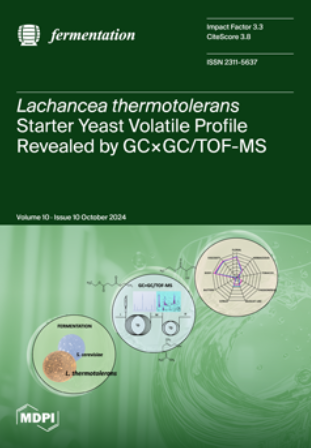Light Induction of Seed Culture Accelerates Lutein Accumulation in Heterotrophic Fermentation of Chlorella protothecoides CS-41
IF 3.3
3区 农林科学
Q2 BIOTECHNOLOGY & APPLIED MICROBIOLOGY
引用次数: 0
Abstract
Microalgae are recognized as a promising and valuable source of lutein. However, the current two-stage method for lutein production has drawbacks, such as complex operations and a long cultivation time. Additionally, utilizing heterotrophic fermentation to cultivate microalgae for lutein production leads to low lutein content due to the absence of light. In this study, we proposed a novel cultivation method that involves light induction of the seed culture to enhance lutein production during the heterotrophic cultivation phase of Chlorella protothecoides CS-41. To gain comprehensive insights into the underlying mechanisms of this method, we conducted qualitative and quantitative analyses of specific metabolites related to central carbon metabolism. The results revealed that low-light induction of seeds exhibited higher carbon efficiency compared to cells continuously subjected to heterotrophic cultivation, which may explain the observed increase in biomass and lutein content in cultures. Cultures after low-light induction of seed exhibited significantly higher lutein content (2.71 mg/g), yield (66.49 mg/L) and productivity (8.59 mg/L/d) compared to those consistently cultivated under heterotrophic conditions (2.37 mg/g, 37.45 mg/L, 4.68 mg/L/d). This cultivation strategy effectively enhances lutein yields, reduces production costs and holds the potential for broader application in other algal species for pigment production.种子培养光诱导促进原小球藻CS-41异养发酵中叶黄素的积累
微藻被认为是一种有前景和有价值的叶黄素来源。然而,目前的两阶段叶黄素生产方法有缺点,如操作复杂和培养时间长。此外,利用异养发酵培养微藻生产叶黄素,由于缺乏光照,导致叶黄素含量低。在本研究中,我们提出了一种新的培养方法,该方法包括对种子培养物进行光诱导,以提高原膜小球藻CS-41异养培养阶段的叶黄素产量。为了全面了解该方法的潜在机制,我们对与中心碳代谢相关的特定代谢产物进行了定性和定量分析。结果表明,与持续进行异养培养的细胞相比,种子的低光诱导表现出更高的碳效率,这可以解释培养物中观察到的生物量和叶黄素含量的增加。与在异养条件下持续培养的培养物(2.37mg/g、37.45mg/d、4.68mg/d)相比,种子低光诱导后的培养物表现出显著更高的叶黄素含量(2.71mg/g)、产量(66.49mg/L)和生产力(8.59mg/L/d)。这种培养策略有效地提高了叶黄素产量,降低了生产成本,并有可能在其他藻类中更广泛地应用于色素生产。
本文章由计算机程序翻译,如有差异,请以英文原文为准。
求助全文
约1分钟内获得全文
求助全文
来源期刊

Fermentation-Basel
BIOTECHNOLOGY & APPLIED MICROBIOLOGY-
CiteScore
3.80
自引率
18.90%
发文量
594
审稿时长
7 weeks
期刊介绍:
Fermentation-Basel is an international open access journal published by MDPI, focusing on fermentation-related research, including new and emerging products, processes and technologies, such as biopharmaceuticals and biotech drugs. The journal enjoys a good reputation in the academic community and provides a high-impact forum for researchers in the field of bioengineering and applied microbiology.
 求助内容:
求助内容: 应助结果提醒方式:
应助结果提醒方式:


